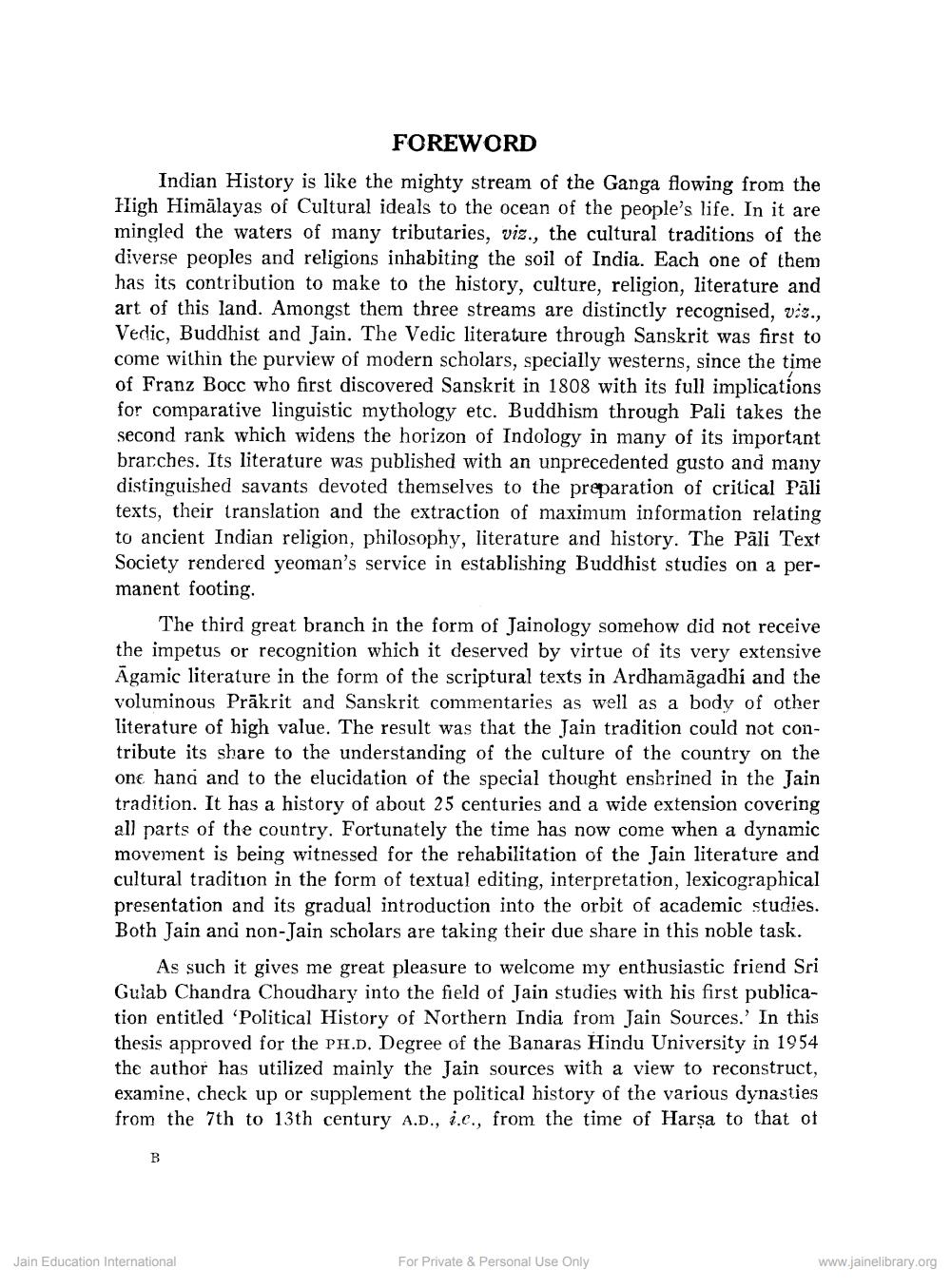________________
FOREWORD Indian History is like the mighty stream of the Ganga flowing from the High Himälayas of Cultural ideals to the ocean of the people's life. In it are mingled the waters of many tributaries, viz., the cultural traditions of the diverse peoples and religions inhabiting the soil of India. Each one of them has its contribution to make to the history, culture, religion, literature and art of this land. Amongst them three streams are distinctly recognised, vis., Vedic, Buddhist and Jain. The Vedic literature through Sanskrit was first to come within the purview of modern scholars, specially westerns, since the time of Franz Bocc who first discovered Sanskrit in 1808 with its full implications for comparative linguistic mythology etc. Buddhism through Pali takes the second rank which widens the horizon of Indology in many of its important brarches. Its literature was published with an unprecedented gusto and many distinguished savants devoted themselves to the preparation of critical Pali texts, their translation and the extraction of maximum information relating to ancient Indian religion, philosophy, literature and history. The Pāli Text Society rendered yeoman's service in establishing Buddhist studies on a permanent footing.
The third great branch in the form of Jainology somehow did not receive the impetus or recognition which it deserved by virtue of its very extensive Āgamic literature in the form of the scriptural texts in Ardhamāgadhi and the voluminous Prākrit and Sanskrit commentaries as well as a body of other literature of high value. The result was that the Jain tradition could not contribute its share to the understanding of the culture of the country on the one hand and to the elucidation of the special thought enshrined in the Jain tradition. It has a history of about 25 centuries and a wide extension covering all parts of the country. Fortunately the time has now come when a dynamic movement is being witnessed for the rehabilitation of the Jain literature and cultural tradition in the form of textual editing, interpretation, lexicographical presentation and its gradual introduction into the orbit of academic studies. Both Jain and non-Jain scholars are taking their due share in this noble task.
As such it gives me great pleasure to welcome my enthusiastic friend Sri Gulab Chandra Choudhary into the field of Jain studies with his first publication entitled 'Political History of Northern India from Jain Sources.' In this thesis approved for the PH.D. Degree of the Banaras Hindu University in 1954 the author has utilized mainly the Jain sources with a view to reconstruct, examine, check up or supplement the political history of the various dynasties from the 7th to 13th century A.D., i.c., from the time of Harsa to that of
Jain Education International
For Private & Personal Use Only
www.jainelibrary.org




